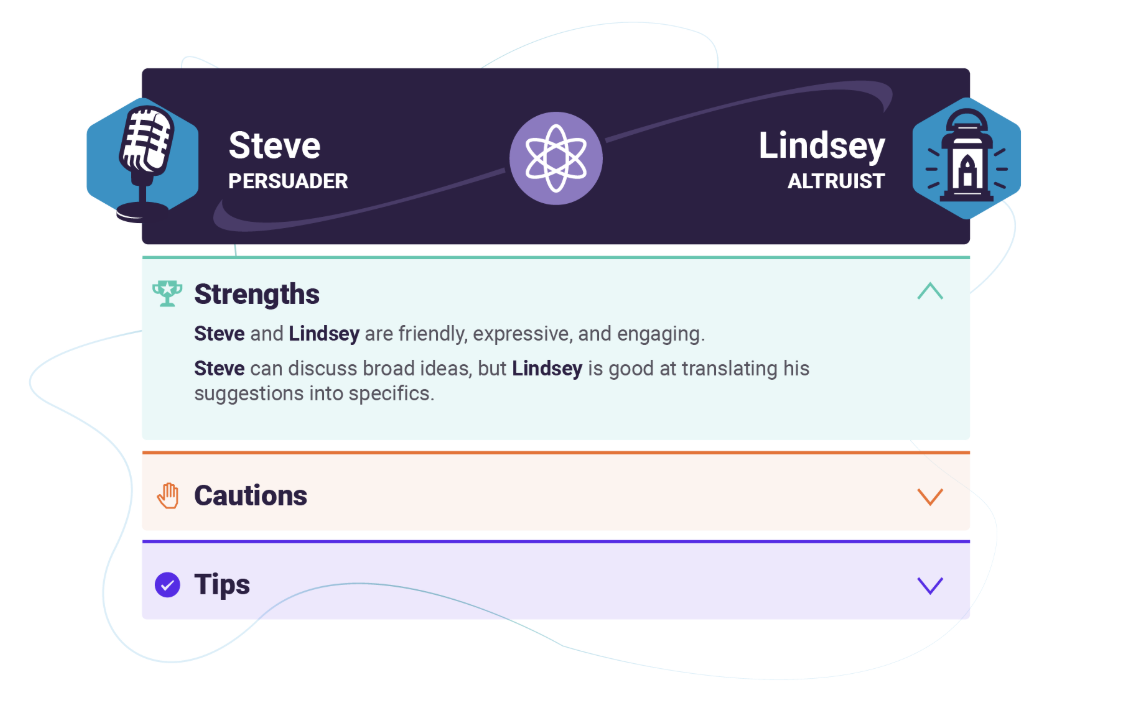What’s the secret behind high-performing teams? It’s psychological safety, according to a Google study called Project Aristotle.
According to the 2022 State of Talent Optimization Report, one in four companies say psychological safety is the top driver of employee retention. If you want to keep great people, ensure psychological safety across the whole company. Like any major initiative, it needs to start at the top with executive buy-in.
Not sure if your employees feel psychologically safe? Start by measuring psychological safety in the workplace. If you find that you need to create a more safe environment in the workplace, read on.
What is Psychological Safety at work?
Psychological safety in the workplace refers to an environment where employees feel safe to express their thoughts, ask questions, and take risks without fear of punishment, ridicule, or negative consequences.
This concept, introduced by Harvard professor Amy Edmondson, is crucial for fostering open communication, creativity, and innovation.
When psychological safety is present, team members are more likely to collaborate effectively, share ideas, and contribute to problem-solving, leading to higher overall performance and job satisfaction.
The importance of psychological safety
In her later works, Edmondson came to describe psychological safety as the “absence of interpersonal fear.”
When fear is present in the workplace, it tends to be pervasive. Employees who are afraid to share their ideas won’t share those ideas. Trust breaks down, creativity falters, and “groupthink” settles in. Left to fester, fear creates a toxic work environment where one person’s decisions overpower all others. And when that happens… people quit.
Psychological safety is critical to preventing all of the above, and ensuring your workplace is happy and engaged.
Develop better leaders with PI’s personalized management software
Empower managers to understand what drives their team with PI Behavioral Insights
How to create psychological safety at work
As a leader, you have to hold people accountable for performance metrics—but the job doesn’t end there. You must also maintain employee engagement by helping people feel comfortable and building the shared belief that the team is safe for risk-taking.
Here are eight tips to build psychological safety in the workplace:

1. Show your team you’re engaged.
If your employees feel that you don’t pay attention when they speak, or that you don’t value their thoughts and opinions, they’ll shut down.
Demonstrate engagement by being present during meetings. This includes making eye contact and shutting your laptop. It’s easy to get distracted by emails, text messages, or Slack during a meeting—but these small acts of disengagement can negatively impact your team’s psychological safety.
Engagement also means listening to what others have to say. Practice active listening. Ask questions to make sure you understand the other person’s ideas or opinions. By actively engaging, you create an environment where people feel it’s only OK to speak up; in fact, it’s encouraged and accepted.
Talent optimization tip: Psychological safety in the workplace is especially important if your company has a producing culture. If you seek to innovate or bring new products to market quickly, teams must feel safe to take interpersonal risks without fear of being punished or ridiculed.
2. Let your team see you understand.
When your people know you care enough to understand and consider their point of view they experience psychological safety.
Demonstrate understanding by recapping what’s been said. Use language like, “What I heard you say is ______. Is that correct?” This shows you want to understand their perspective. It also gives your team members an opportunity to clarify if you misunderstood something they said.
You can also show understanding with body language. Nod your head during discussions to acknowledge what an employee is saying. Lean forward to show engagement. Be aware of your facial expressions. If you look tired, bored, or unhappy, your employees will notice. While you might not mean anything by it, employees may internalize the message you’re sending with your face: I don’t like this idea.
3. Avoid blaming to build trust.
It’s easy when something goes awry to look for someone to blame. But, to build and maintain psychological safety in the workplace, focus on solutions.
Instead of “What happened and why?” ask “How can we make sure this goes better next time? Notice the focus on the collaborative language: How can we make sure this goes smoothly next time? We statements turn the responsibility into a group effort, rather than singling out an individual for a mistake.
4. Be self-aware—and demand the same from your team.
People bring their whole self to work—their unique personalities, preferences, and work styles. Build self-awareness on your team by sharing how you work best, how you like to communicate, and how you like to be recognized. Encourage your team members to do the same.
High-performing companies administer behavioral assessments to help employees build self-awareness. Assessments can also be used to build psychological safety in the workplace. For example, at PI, we use the Relationship Guide tool in our software to make sure we respect the other person’s preferences for working and communicating.

5. Nip negativity in the bud.
If you have a team member who speaks negatively about peers, talk to them about it. Be clear; let them know that you work together as a team and negativity will not be tolerated.
When leaders allow negativity to stand, it can become contagious and spread to others.
6. Include your team in decision making.
When making decisions, consult your team. Ask for their input, thoughts, and feedback. Not only will this help them feel included in the decision-making process, but it will build psychological safety and lead to better outcomes.
Once a decision is made, explain the reasoning behind your decision. How did their feedback factor into the decision? What other considerations were made? Even if your employees don’t agree, they’ll appreciate the honesty and transparency behind how the decision was made.
If you’re a senior leader in the company, being inclusive and transparent is even more critical. According to the 2022 State of Talent Optimization Report, the third highest driver of employee retention is trust in senior leadership.
When communicating decisions, be sure to highlight contributions from team members. If a certain idea or piece of feedback led to the decision or a successful outcome, acknowledge and celebrate that employee’s contribution.
7. Be open to feedback.
As a leader, it’s your responsibility to make the final judgment call on a number of decisions. Your team needs to know that you are confident in this responsibility, but also that you’re flexible in approach and open to their feedback.
When employees feel psychologically safe, they feel empowered to give feedback—up, down, and across. And this means they feel comfortable enough to knock on the CEO’s door when there’s critical information to share.
Invite your team to challenge your perspective and push back. While this may be uncomfortable at first, healthy conflict leads to better decisions and greater accountability—making it a win all around. You might also lead by example by taking interpersonal risks and sharing failures. Try getting up at the next all-company meeting and presenting on a failure—and what you learned.
8. Champion your team.
Finally, it’s important to support and represent your team. Let them know you’re on their side by supporting their personal and professional development. Be sure to share the team’s work with senior leadership to increase visibility into what your team is doing—and give credit to teammates when due.
How The Predictive Index can help create a culture of psychological safety
Psychological safety doesn’t happen overnight. It takes effort from everyone in your organization to create an environment where employees feel included and valued.
The Predictive Index’s talent optimization platform gives you the tools to make psychological safety actionable. Use 65+ years of behavioral science to build safety and engagement at all parts of the employee lifecycle:
- PI Hire: Find strong-fit candidates and put them in roles where they thrive, all while reducing risk and bias.
- PI Inspire: Resolve employee conflict, improve 1:1 relationships, and create an environment of collective trust.
- PI Design: Identify your team’s strengths and opportunity areas, and leverage every person’s natural abilities.
- PI Diagnose: Collect candid employee feedback to create a culture where every individual’s voice is heard.
Building psychological safety in the workplace pays off.
At the end of the day, employee performance will improve as a result of creating a psychologically safe workplace. And employees who feel safe and engaged at work are less likely to quit. Try one—or all—of these eight strategies for building psychological safety at work and see how it impacts your team.
Develop better leaders with PI’s personalized management software
Empower managers to understand what drives their team with PI Behavioral Insights








